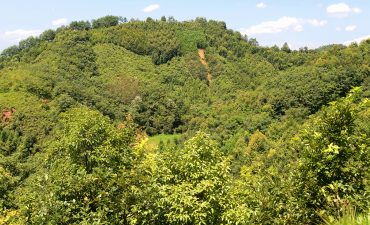Without management: beech trees become larger and more stable
A comparison of differently managed beech forests shows that as longer a forest is not used for logging, the greater the change in the shape of the trees. This can have consequences for forest management in the future, as a study with participation of the Naturwald Akademie shows.
In their study, the authors investigated beech in four forest areas (pure beech stands), all located in the west of Schleswig-Holstein in the northern part of Germany. One site has not been managed for more than 50 years, another for more than 20 years. The third forest area is currently weakly managed, the fourth is heavily managed. Using a terrestrial laser scanner (TLS), beech trees were examined for 28 different morphological characteristics. In addition, the distribution of the wood volume over the entire trunk was calculated. Using this method, it is possible to precisely measure every tree above the ground and graphically display it exactly in three dimensions.
Clear results
The study shows that the individual trees differ significantly in 26 out of 28 characteristics, depending on the degree of cultivation. The beech trees in unmanaged forests are thinner, had fewer branches and a smaller wood volume than those on the cultivated areas. In the heavily managed forests, on the other hand, the trees grew less tall and had a rather conical shape (so-called deforestation). In abandoned forests, on the other hand, they grew more cylindrically and have a smaller crown. Furthermore, the amount of usable solid wood (i.e. trees with a chest height diameter of more than 7 cm) in unmanaged stands is lower than in heavily managed stands.
Economically relevant
These results show that in unmanaged beech stands about three quarters of the wood is usable solid wood. On the cultivated areas, on the other hand, it is only slightly more than half, the rest is e.g. brushwood. With regard to the knot-free tree trunks, the volume of wood in both stands is almost identical, whereby the trees in the unmanaged stand grow thinner, but higher, and the trunks become less choppy upwards.
Without cultivation 3.5 times more trunk wood
How can these differences be explained? The investigated unmanaged forest areas had significantly higher reserves, higher base areas and more trees per hectare than the managed stands. The study also shows that conventional methods for determining such stand characteristics often far underestimate them, especially in unmanaged forests. However, the focus of this study was primarily on the individual tree level and not on the stand level. If, however, the stand data were calculated on the basis of the scanned individual trees, the amount of usable coarse wood would be almost three times higher for the unmanaged forest. The amount of economically valuable logs would also be more than 3.5 times higher.
Comment
As a method for tree surveying, terrestrial laser scanning provides important insights into growth behaviour and tree architecture. According to the results of this study, trees grow more efficiently in natural forests or in extensively managed forests. They form smaller crowns and distribute their wood evenly into knot-free, long trunks. Their wood is particularly suitable for marketing. In these forests there is a higher number of potentially valuable trees per hectare due to a low thinning rate. These trees also bind carbon over a longer period of time. This is because the longer knot-free logs can be used to produce more long-lasting products on the one hand and on the other hand deadwood logs remaining in the forest decompose more slowly.
Stable and valuable trees
The results of this study should therefore have important effects on forest practice and economic decisions in beech forests. Extensive management leads to higher stand density, higher stocks and the growth characteristics described above. The smaller crown size and the cylindrical growth of the entire trunk also indicate a lower susceptibility to wind. Weakly or no longer maintained beech-dominated forests consist of more stable and valuable trees.
Note: Several of the authors are employees of the Naturwald Akademie or members of the academy’s scientific advisory board.
Source
Long-Term Abandonment of Forest Management Has a Strong Impact on Tree Morphology and Wood Volume Allocation Pattern of European Beech (Fagus sylvatica L.), Louis Georgi et al. Forests 2018, 9(11), 704; doi:10.3390/f9110704


